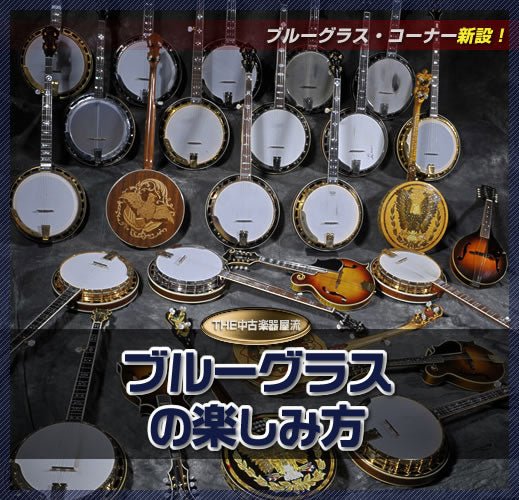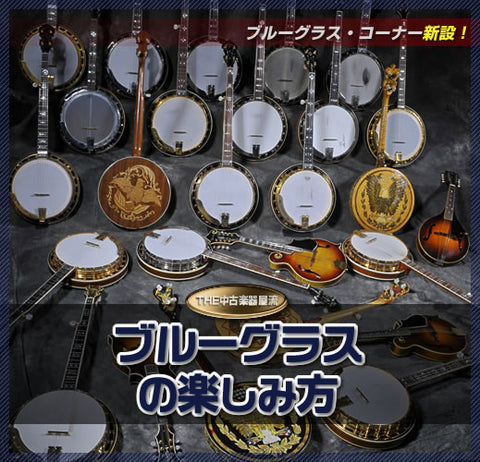
☆Bill Monroe (September 13, 1911 - September 9, 1996)
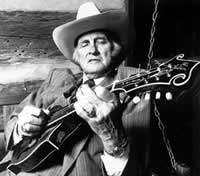
Mandolinist, singer, and composer who established bluegrass music, known as the "Father of Bluegrass. Bill grew up in a family of music lovers and began playing the mandolin at the age of 10. They gained popularity through radio appearances and regional tours, and in 1936, they signed with Victor, where they made their first recording. He then formed his own band, The Kentuckians, which soon changed its name to The Bluegrass Boys. In October '39, he made his first appearance on the country radio program "Grand Ole Opry," and in '40, he signed with "RCA Victor. In '45, he moved to Columbia, where banjo virtuoso Earl Sluggs joined him, and a style of music known as "bluegrass" blossomed. For almost 60 years, he was one of the artists who contributed greatly to American culture in the 20th century.
Instrument: Gibson F5 Lloyd Loar '23 #73987
◎Gibson F5-L '00
A reissue of the original F5 by Lloyd Loar from 1922-'24, popular as a special model since its release in 1978.

☆Earl Scruggs (January 6, 1924 - March 28, 2012)

Earl Scruggs, a banjo player known as one of the founding fathers of bluegrass music along with Bill Monroe, joined the Blue Grass Boys in 1945, and his outstanding and distinctive three-finger picking style firmly established him as a pioneer of the later generation of banjo players. In the late 1940s, he became a guitarist and a member of the Blue Grass Boys. In the late '40s, he formed the Foggy Mountain Boys with guitarist Lester Flatt." Foggy Mountain Breakdown" and remained active as a top country and bluegrass musician for many years. He is regarded as one of the 20th century's masters who single-handedly perfected the art of playing a single instrument. He passed away in March of this year due to old age. He was 88 years old.
Instrument: 1931 Original 5 String Granada #9584-2
1949 Gibson put bow tie inlay parts on it.
Rim & Resonator Tone Ring Original
1958 Mahogany Neck + Rosewood Fingerboard H&F Inlay
Late 60's Ebony Fingerboard with H&F Inlay
Gibson Earl Scruggs Special '95
All hardware is 24K gold plated. The headstock, fingerboard, neck, and resonator are all decorated with gorgeous glossy Avalon, making this a truly special gem!

◎Gibson Earl Scruggs Golden Deluxe '04
The 24K gold hardware is a special feature of the Scruggs Deluxe model.

◎Gibson Earl Scruggs Standard '07
A reissue of Scruggs' favorite Granada model, the Standard replica was released in 1984. This signature style is so beloved by fans that it is now considered the standard banjo model.

☆Ralph Stanley (February 25, 1927-)
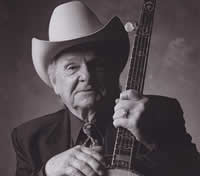
Ralph Stanley, a first-generation bluegrass banjo player still dashing on stage at over 80 years of age, formed the Stanley Brothers with his brother Carter in 1946, initially playing music with a strong ethnic flavor, but as Bill Monroe popularized bluegrass music in "The Grand Ole Opry," the Stanleys worked on their own style. As bluegrass music became popularized, they began to work on their own style of music. And the Stanley brothers' attempt to do bluegrass music in the conventional mountain style was realized with the formation of the Clinch Mountain Boys.' After the death of their older brother Carter in 1966, they became frontmen themselves and continued their energetic activities, delivering straight, high lonesome vocals and sharp banjo tones.
Instrument: 1928-29 TB or PB-5 Converted to 5 String with Mahogany Neck Finish Like Walnut
He also Had a Ball Bearing RB-4
◎Gibson Style-5 '28-'29 ASK
Style-5 '28-'29 TB or PB-5 converted to 5-string specification.

☆Reno & Smiley (Don Wesley Reno: February 21, 1927 - October 16, 1984; Arthur Lee "Red" Smiley: May 17, 1925 - January 2, 1972)

One of the golden bands of yesteryear that supported bluegrass from its inception to maturity. Dan Leno, who is regarded as a banjo virtuoso along with Scruggs, and Red Smiley, whose sweet vocals are a signature of the band. The baritone vocals of Red Smiley, who sang with austere and unaffected ease, were especially appealing when intertwined with the tenor vocals of Dan Leno, who made effective use of serenades and ninths. Also, the banjo instrumental numbers such as "Steel Guitar Rag," "Follow the Leader," and "Double Eagle," which featured Dan Leno's superb technique, were also a hit. Although they are often overshadowed by the original three bluegrass groups (Bill Monroe, Flatt & Scruggs, and the Stanley Brothers), their ability and talent as successful entertainers in the Piedmont region of Virginia and North Carolina is remarkable. However, their ability and talent to entertain in the Piedmont region from Virginia to North Carolina is remarkable.
Instrument used: 1934-5 Original RB-75 Mahogany Banjo
Leave & Rose Inlay on Headstock and Flying Eagle Fingerboard Original that Way
1948 Traded his Granada for This 75 with Earl
Gibson RB-75 Black Jack '05
This Black Jack is one more than J.D. Crowe's standard signature, inherited from Dan Leno's RB-75. The gold-plated hardware and elaborate headstock inlays create a luxurious atmosphere.

☆Jim & Jesse (Jim McReynolds: February 13, 1927 - December 31, 2002; Jesse McReynolds: July 9, 1929 - )

The McReynolds Brothers, known as a duo featuring older brother Jim on guitar and younger brother Jesse on mandolin, began playing together in the late 1940s, and although they were a unique ensemble in the bluegrass scene in that there was no banjo in their lineup, they compensated by incorporating banjo techniques into their mandolin playing. Jesse's style was revolutionary and had a profound influence on later mandolin players. The group disbanded in 1963.
Instrument: Gibson F5 Style
◎Gibson F5 '66-'69
The F5 is a classic style of scrolled asymmetrical body, a masterpiece of Mr. Lloyd's tradition with the superb tone of vintage maple.

☆Osborne Brothers (Bobby: December 9, 1931-, Sonny: October 29, 1937-)
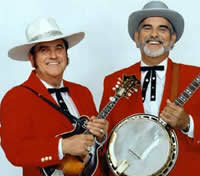
The Osborne Brothers, led by older brother Bob (mandolin) and younger brother Sonny (banjo). The Osborne Brothers were formed in 1953 by Jimmy Martin (vocals), who quit Bill Monroe's Bluegrass Boys, Bob, with his high tenor vocals, and Sonny, an orthodox bluegrass banjo player, After a split with Jimmy, the Osborne Brothers officially became active in '55. The trio's original-sounding ensembles and choruses, such as "Once More," were well known and highly acclaimed.
Instrument: 1931 Original 5 string Flat Head Granada #9584-2
Original 5 String Stored Away and Frank Neat Made a Neck
He also had a Style 3 and Vega Vox (Kenny Inglam now plays)
◎Gibson Granada Flying Eagle '04
A masterpiece Flying Eagle model in the pre-war Granada style with 20-hole flat head tone ring and 3-ply hard rock maple wood rims!
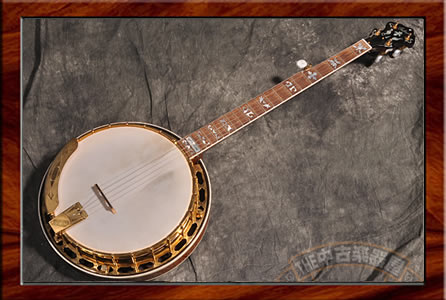
☆J.D.Crowe (August 27, 1937-)

A banjo player who is considered the most legitimate heir to the Earl Scruggs style, James Dee Crowe was born in Lexington, Kentucky in 1937 and began playing the banjo at age 13. After six years with the group, he formed the Kentucky Mountain Boys with Red Allen and Doyle Lawson. The band changed its name to the New South and released "Bluegrass Evolution" in 1972 with guitarist Tony Rice. The band's popularity was assured with the hit "J.D. Crowe & the New South" ('75), which included Lester Flatt's number "Rock, Salt & Nails" and Tony's playing that surpassed Clarence White's. Unfortunately, the band did not perform well until this year, when they released their second album "Bluegrass Evolution. Unfortunately, this year comes news of the breakup of J.D. Crowe & the New South and the retirement of J.D. Crowe because "I want to retire while I can still play well".
Instrument used: No hole Flat Head TB or PB-3 Converted to 5 String
20 Hole Flat Head TB- or PB-3 Conversion
1935-6 Original RB-75 #7054-2
Original 5 string stored away and Frank Neat made a neck
◎Gibson RB-75 J.D.Crowe '03
RB-75 J.D. Crowe signature model with impressive flying eagle inlays. Mahogany neck with warm and soft tone.
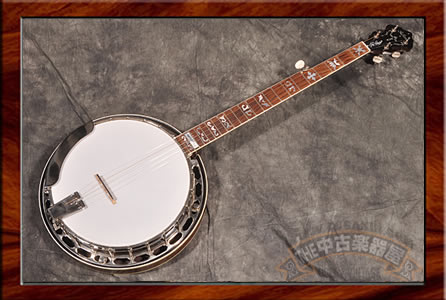
☆Sam Bush (April 15, 1952-)

One of the driving forces of New Grass in the '70s, mandolin and fiddle virtuoso Sam Bush. He formed the New Grass Revival, furthering the musical sensibilities of the Bluegrass Alliance, and in 1971, his rock and roll number "Fireball Rock" by Jerry Lee Lewis catapulted him to stardom on the bluegrass scene. Despite their long hair and shabby jeans and T-shirts, their sharply honed sense of style and skill exuded a great appeal that drew many rock fans into bluegrass music. Their flexible, genre-independent stance has allowed them to continue to be active in a wide range of genres. He is regarded as one of the most talented inheritors of the Bill Monroe style.
Instrument: Gibson F5 '34
◎Gibson F5 Sam Bush Model '00
Early version of Sam Bush model under the supervision of the late Charlie Derrington. A gem that produces a sweet and fat Gibson sound with a great reverb feel! A must-have item for glassers!


Early period

Around the 17th and 18th centuries, the traditional music of the Scotch/Irish (people who immigrated from Scotland in the Ulster region of what is now Northern Ireland) who settled in the Appalachian region of the United States was combined with the music of the blacks who worked as slaves in the United States at the time, and what is now called "old-time" music was formed. The origin of what is now called "old-time music" was formed. Later, in the 1920s and 1930s, with the spread of records and radio, many professional musicians were born. The success of Jimmie Rodgers, the Carter Family, the North Carolina Ramblers, and the Monroe Brothers led by Bill Monroe, later called the "father of bluegrass," led to the birth of old-time music, known as "mountain" or "hillbilly" music, which became a household name. The Monroe Brothers, led by Bill Monroe, later known as the "father of bluegrass," and others.

The most popular radio program was "The Grand Ole Opry" on WSM in Nashville, Tennessee, which became a mainstream entertainment style that emphasized star power after Roy Acuff's appearance in 1938. In the 1940s, as hillbilly evolved into country music, mandolin virtuoso Bill Monroe, who had been popular with the Monroe Brothers, began playing a more advanced version of country. Named for the Bluegrass State, another name for Kentucky, Bill Monroe & the Bluegrass Boys formed in 1939. The band experimented with an innovative style of playing that introduced up-tempo and instrumental virtuosity, and in December 1945, the band's sound was perfected with the addition of Earl Scruggs, a prodigious banjo player from North Carolina. The band's sound was completed in December 1945 with the addition of Earl Scruggs, a prodigious banjo player from North Carolina. Scruggs played emotionally with his unique three-finger picking style and immediately caused a sensation among the audience of the "Grand Ole Opry.
[The First Golden Age
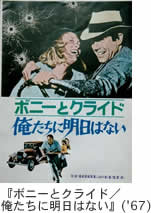
Lester Flatt
In the 1960s, the folk boom in the East brought southern musicians to the cities, and many bluegrass bands participated in the Newport Folk Festival, a music festival held in 1958. Among them, the appeal of Doc Watson and Clarence White's guitars, Earl Scruggs' banjo, and Bill Monroe's mandolin attracted a larger urban audience and gained a following. Since this time, the approach of urban players to southern artists has been

The South began to revitalize, with David Grisman and Red Allen making contact, and Bill Keith & Peter Rowan and Richard Greene joining the Bluegrass Boys. Later, as the folk boom settled down, folk & country found its rock color, and bluegrass musicians such as Clarence White, Peter Rowan, and Richard Greene became prominent in joining rock bands such as the Byrds and Sea Train. In the late 1960s, when Flatt & Scruggs, at the height of their popularity, made their first appearance in Japan, bluegrass entered the "New Grass Era" with the emergence of Sam Bush and Tony Rice.
The New Grass Era
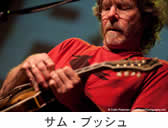
In the early 1970s, American rock music became mainstream, and bluegrass became a new movement called "new grass. Many new bluegrass bands and units emerged, including Sam Bush's New Grass Revival, J.D. Crowe's New South with Tony Rice, Country Gusset, derived from the Flying Burrito Brothers, and Country Cooking with Tony Trischka and others. Many new bluegrass bands and units emerged, including the Flying Burrito Brothers. Muleskinner, Old & in the Way, and the Nitty Gritty Dirt Band by Clarence White, David Grisman, and others also became popular for their rock involvement.' In the 70's, the original Bill Monroe also visited Japan, and the number of circles and live houses in Japan increased, giving birth to the Guitar Boys and the Banjo Boys.
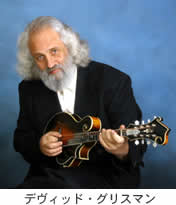
In the late 1970s, during the West Coast swing jazz revival, David Grisman, who was seeking a fusion of jazz and bluegrass, developed a style of music called "Dawg Music" that spun a unique driving and swinging sound with acoustic string instruments. Dawg Music" is a style of music that spins a unique sense of drive and swing on acoustic stringed instruments. This style of music was fully demonstrated on the album "David Grisman Quartet" ('77), which boasted an overwhelming degree of perfection. The origin of the name "David Grisman Quartet" is believed to come from the initial letters of Grisman's middle name and other initial letters of his name. Grisman invited Stefan Grappelli and Eddie Gomez from the jazz world, and bluegrass fans were also introduced to Django Reinhardt and others, and bluegrass music became diverse and fuzzy.
Bluegrass music became more diverse and fuzzy.

Sam Bush, who was trying to bring the New Grass Revival to the big time, was playing high-impact glass-rock with a powerful lineup that included Béla Fleck, John Cowan, and Pat Flynn, who were the best players of the time. Béla Fleck, a New Grass revivalist, launched the Nashville Bluegrass Band with Pat Enright and others at the Station Inn, a live house in Nashville. Meanwhile, Grisman released "Traditional Bluegrass," an album featuring new and old players, and the '80s were a time of going back to the roots and further development.

From the '90s onward, female graspeople such as Laurie Lewis and Kathy Carrick, Alison Krauss, Lynn Morris, Dale Ann Bradley, Alison Brown, and Kate McKenzie, who had collaborated with former Led Zeppelin member Robert Plant, became prominent. The activities of these artists became more prominent, appealing to the strength and grace of male artists as much as to their male counterparts. This has continued from boom to establishment to the present. Young male glassers such as Tony Fatard, Scott Nygaard, the McCrory Brothers, Tom Rozum, and Tom Hanway have also emerged. They are carrying on traditional music in the spirit of warmth and innovation.
Bluegrass music was perfected in 1945 by Bill Monroe, Earl Scruggs, and Lester Flatt, and on March 28, 2012, 67 years after its inception, one of its founders, the great banjo player Earl Scruggs, passed away. He was 88 years old. His contributions to bluegrass are immeasurable.

His contribution to bluegrass is immeasurable. I am sure he is busy with his sessions with Bill Monroe, who passed away on September 9, 1996. Why don't you take this opportunity to experience bluegrass music, while appreciating its long history supported by various artists, including its founders? You may be moved and discover something new.
Source: Introduction to Bluegrass Music

